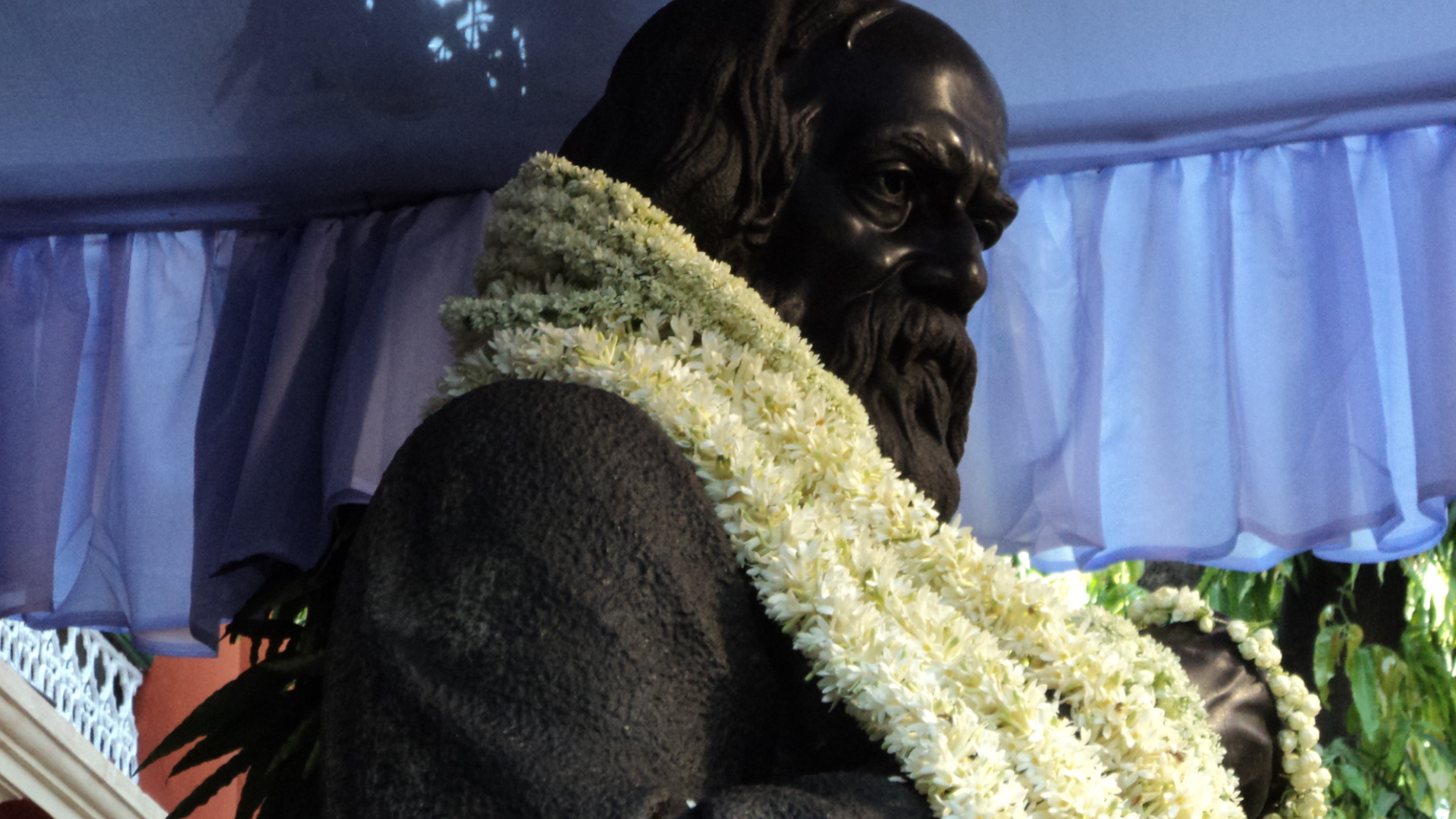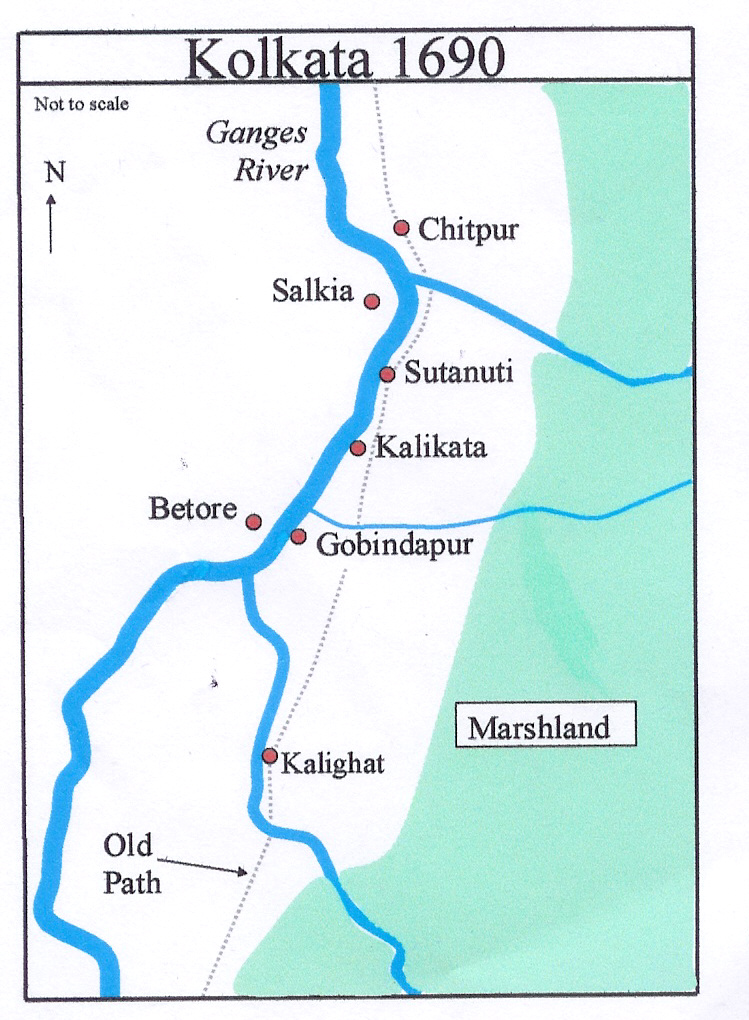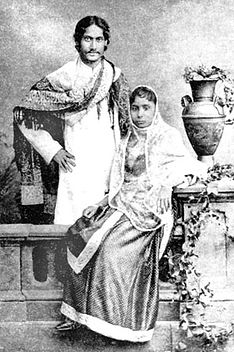|
Jorashanko
Jorasanko is a neighbourhood of North Kolkata, in Kolkata district, West Bengal, India. It is so called because of the two (''jora'') wooden or bamboo bridges (''sanko'') that spanned a small stream at this point. History Apart from the distinguished seat of the Tagore family, traditionally known as the Jorasanko Thakur Bari, it was also home of the Singhas (including Kaliprasanna Singha), the Pals (including Krishnadas Pal), and the families of Dewan Banarasi Ghosh, Gokul Chandra Daw, Narsingha Chandra Daw, Prafulla Chandra Gain, and Chandramohan Chatterji. "The area thus became the cradle of Bengal Renaissance."Nair, P. Thankappan in ''The growth and Development of Old Calcutta'' in ''Calcutta, the Living City'', Vol I, edited by Sukanta Chaudhuri, pp. 15–17, Oxford University Press, . It was earlier known as Mechuabazar.Deb, Chitra, ''Jorasanko and the Thakur Family'', in ''Calcutta, the Living City'', Vol I, edited by Sukanta Chaudhuri, pp. 64–66, Oxford University Press ... [...More Info...] [...Related Items...] OR: [Wikipedia] [Google] [Baidu] |
Jorasanko Thakur Bari
Jorasanko Thakur Bari (Bengali: ''House of the Thakurs''; anglicised to ''Tagore'') in Jorasanko, North Kolkata, West Bengal, India, is the ancestral home of the Tagore family. It is the birthplace of poet Rabindranath Tagore and the host of the Rabindra Bharati University campus. History Jorasanko Thakur Bari was built in the 18th century on the land donated by the Sett family of Burrabazar to ‘Prince’ Dwarkanath Tagore. Rabindra Bharati University The Rabindra Bharati University was established by the government of West Bengal in 1961 to commemorate the birth centenary of Rabindranath Tagore. Rabindra Bharati Museum The house has been restored to reflect the way the household looked when the Tagore family lived in it and currently serves as the Tagore museum, offering details about the history of the Tagore family including their involvement in the Bengal Renaissance and the Brahmo Samaj. Photography is strictly prohibited inside the museum, but allowed in outside. T ... [...More Info...] [...Related Items...] OR: [Wikipedia] [Google] [Baidu] |
North Kolkata
North Kolkata encompasses the northern part of Kolkata, including the city's oldest neighbourhood. Shyambazar, Bagbazar, Kumartuli, Shobhabazar, Posta, Jorasanko, Rajabazar, Phoolbagan, Maniktala, Kankurgachi, Ultadanga, Chitpur, Belgachia, Tala, Cossipore, and Sinthee are among its many neighbourhoods. Old heritage buildings and temples are there, as well as Shovabazar Rajbari. Because of its rich cultural heritage, it is commonly referred to as Babu Kolkata. It hosts palatial structures including Laha Bari, Pathuriaghata Ghosh Bari, and Thakur Bari. North Kolkata houses the main campuses of several universities, including the University of Calcutta, Presidency University, and Rabindrabharati University. This area hosts railway junctions and metro stations. It is also the business center hub, stretching from Sinthee Crossing to Chiriamore Crossing to Shyambazar Crossing to Burrabazar. Property values in North Kolkata are above average due to its central location. Histor ... [...More Info...] [...Related Items...] OR: [Wikipedia] [Google] [Baidu] |
Jyotirindranath Tagore
Jyotirindranath Tagore ( bn, জ্যোতিরিন্দ্রনাথ ঠাকুর; 4 May 1849 – 4 March 1925) was a playwright, a musician, an editor and a painter. He played a major role in the flowering of the talents of his younger brother, the first non-European Nobel Prize winner, Rabindranath Tagore.Bandopadhyay, Hiranmay, ''Thakurbarir Katha'', , pp. 106-113, Sishu Sahitya Sansad. Works * Historical plays -''Purubikram'' (1874), ''Sarojini'' (1875), ''Ashrumati'' (Woman in tears, 1879), ''Swapnamayi'' (Lady of Dream, 1882). * Satirical plays - ''Kinchit Jalajog'' (Some Refreshments, 1873), ''Eman Karma Ar Korbo Na'' (I will never do such a thing again 1877), ''Hathath Nabab'' (Suddenly a Ruler, 1884), ''Alik Babu'' (Strange Man, 1900). * Translations - Kalidas's ''Abhijñānaśākuntalam'' (The Recognition of Shakuntala) and ''Malati Madhava'' (Malati and Madhava); Sudrak's ''Mrichhatika'' (Little Clay Cart); Marcus Aurelius’ ''Meditations'', Shakespeare' ... [...More Info...] [...Related Items...] OR: [Wikipedia] [Google] [Baidu] |
Michael Madhusudan Dutta
Michael Madhusudan Dutt ((Bengali: মাইকেল মধুসূদন দত্ত); (25 January 1824 – 29 June 1873) was a Bengali poet and playwright. He is considered one of the pioneers of Bengali literature. Early life Dutt was born in Sagardari Union, Sagardari, a village in Keshabpur Upazila, Jessore District of Bengal Presidency, Bengal, to a Hinduism in India, Hindu family. His family being reasonably well-off, Dutt received an education in the English language and additional tutorship in English at home. Rajnarayan had intended for this Western education to open the doors for a government position for his son. College and religious conversion After he finished his education in Sagordari at roughly the age of fifteen, Rajnarayan sent Madhusudhan to Kolkata, Calcutta to attend Presidency University, Kolkata, Hindu College with the eventual aim of becoming a barrister. At Hindu College, Michael studied under a Westernization, westernized curriculum in a uni ... [...More Info...] [...Related Items...] OR: [Wikipedia] [Google] [Baidu] |
Asiatic Society Of Bangladesh
The Asiatic Society of Bangladesh is a non political and non profit research organisation registered under both Society Act of 1864 and NGO Bureau, Government of Bangladesh. The Asiatic Society of Bangladesh was established as the Asiatic Society of East Pakistan in Dhaka in 1952 by a number of Muslim leaders, and renamed in 1972. Ahmed Hasan Dani, a noted Muslim historian and archaeologist of Pakistan played an important role in founding this society. He was assisted by Muhammad Shahidullah, a Bengali linguist. The society is housed in Nimtali, walking distance from the Curzon Hall of Dhaka University, locality of Old Dhaka. Publications The society's publications include: * ''Banglapedia, the National Encyclopedia of Bangladesh'' (edition 2, 2012) * ''Encyclopedia of Flora and Fauna of Bangladesh'' (2010, 28 volumes) * ''Cultural Survey of Bangladesh, a documentation of the country's cultural history, tradition and heritage'' (2008, 12 volumes) * ''Children’s Banglapedia'', a ... [...More Info...] [...Related Items...] OR: [Wikipedia] [Google] [Baidu] |
Julius Caesar (play)
''The Tragedy of Julius Caesar ''(First Folio title: ''The Tragedie of Ivlivs Cæsar'') is a history play and tragedy by William Shakespeare first performed in 1599. In the play, Brutus joins a conspiracy led by Cassius to assassinate Julius Caesar, to prevent him from becoming a tyrant. Caesar's right-hand man Antony stirs up hostility against the conspirators and Rome becomes embroiled in a dramatic civil war. Characters * Julius Caesar ''Triumvirs after Caesar's death'' * Octavius Caesar * Mark Antony * Lepidus ''Conspirators against Caesar'' * Marcus Brutus (Brutus) * Cassius * Casca * Decius Brutus * Cinna * Metellus Cimber * Trebonius * Caius Ligarius ''Tribunes'' * Flavius * Marullus ''Roman Senate Senators'' * Cicero * Publius * Popilius Lena ''Citizens'' * Calpurnia – Caesar's wife * Portia – Brutus' wife * Soothsayer – a person supposed to be able to foresee the future * Artemidorus – sophist from Knidos * Cinna – poet * Cobbler * C ... [...More Info...] [...Related Items...] OR: [Wikipedia] [Google] [Baidu] |
William Shakespeare
William Shakespeare ( 26 April 1564 – 23 April 1616) was an English playwright, poet and actor. He is widely regarded as the greatest writer in the English language and the world's pre-eminent dramatist. He is often called England's national poet and the " Bard of Avon" (or simply "the Bard"). His extant works, including collaborations, consist of some 39 plays, 154 sonnets, three long narrative poems, and a few other verses, some of uncertain authorship. His plays have been translated into every major living language and are performed more often than those of any other playwright. He remains arguably the most influential writer in the English language, and his works continue to be studied and reinterpreted. Shakespeare was born and raised in Stratford-upon-Avon, Warwickshire. At the age of 18, he married Anne Hathaway, with whom he had three children: Susanna, and twins Hamnet and Judith. Sometime between 1585 and 1592, he began a successful career in London as an ... [...More Info...] [...Related Items...] OR: [Wikipedia] [Google] [Baidu] |
Chitpur
Chitpur (or Chitpore) is a neighbourhood in North Kolkata in Kolkata district in the Indian state of West Bengal. Sometimes, the entire area along Chitpur Road is referred to as Chitpur, although the various localities have distinctive names. History Chitpur has existed for at least 400 years. It received its name from the goddess Chitteswari, who had a splendid temple here erected by Gobindram Mitter, where human sacrifices used to be offered. The lofty dome of the temple, which was known as Nabarutna or the shrine of nine jewels, fell during the earthquake of 1737, and it is now in ruins. According to another source, the area was earlier named Chitrapur. It is referred to in Bipradas Pipilai's poem ''Manasamangal'' in 1495, but it could be a later interpolation. According to it, Chitpur was home to Chakrapani, Commander-in-Chief of the Nawab of Bengal's army, and had a flourishing colony of artists. It refers to one Gobinda Ghosh as founder of the Chitteswari temple in 1610. ... [...More Info...] [...Related Items...] OR: [Wikipedia] [Google] [Baidu] |
Oriental Seminary
The Oriental Seminary started in 1829 by the educator Gour Mohan Addy, was the earliest privately run, first-rate school for children of Hindu parents in Kolkata (then known as Calcutta). It was open only to boys of Hindu parents. It was possibly India’s first fully private school, as even Hindu School, then known as Hindu College, and also Hare school had to abide by certain government guidelines. In earlier days, students wanting to study English had to go to the missionary schools, where they were subject to substantial religious influence. The establishment of a school for learning English, free from religious influences was a major contribution of Addy.Sengupta, Subodh Chandra and Bose, Anjali (editors), 1976/1998, ''Sansad Bangali Charitabhidhan'' (Biographical dictionary) Vol I, , p. 147, Traditional Indian education centres which taught Sanskrit and/or Persian had started fading out. The founder and teachers Gour Mohan Addy (20 January 1805 – 3 March 1846) found ... [...More Info...] [...Related Items...] OR: [Wikipedia] [Google] [Baidu] |
Adi Brahmo Samaj
Adi Dharm refers to the religion of Adi Brahmo Samaj ( bn, আদি ব্রাহ্ম সমাজ, Adi Brahmô Shômaj) the first development of Brahmoism and includes those Sadharan Brahmo Samajists who were reintegrated into Brahmoism after the second schism of 1878 at the instance of Hemendranath Tagore. This was the first organised casteless movement in British India and reverberated from its heart of Bengal to Assam, Bombay State (Maharashtra and Gujarat), Punjab and Madras, Hyderabad, and Bangalore. Tenets It was never conceived as an "anti-caste" movement, but stood for repudiation of all "distinctions between people" and foundation of a modern educated Indian nation under the timeless and formless God, and its adherents as Adi-Dharmis (or worshipers of the ancient formless indivisible One God called ''Brahma'' or the ''Parambrahma'' "The One without a Second" or ''EkAdavaitam''). Although the doctrine of Adi Dharma is superficially similar to other reformatory "sec ... [...More Info...] [...Related Items...] OR: [Wikipedia] [Google] [Baidu] |
Jorasanko
Jorasanko is a neighbourhood of North Kolkata, in Kolkata district, West Bengal, India. It is so called because of the two (''jora'') wooden or bamboo bridges (''sanko'') that spanned a small stream at this point. History Apart from the distinguished seat of the Tagore family, traditionally known as the Jorasanko Thakur Bari, it was also home of the Singhas (including Kaliprasanna Singha), the Pals (including Krishnadas Pal), and the families of Dewan Banarasi Ghosh, Gokul Chandra Daw, Narsingha Chandra Daw, Prafulla Chandra Gain, and Chandramohan Chatterji. "The area thus became the cradle of Bengal Renaissance."Nair, P. Thankappan in ''The growth and Development of Old Calcutta'' in ''Calcutta, the Living City'', Vol I, edited by Sukanta Chaudhuri, pp. 15–17, Oxford University Press, . It was earlier known as Mechuabazar.Deb, Chitra, ''Jorasanko and the Thakur Family'', in ''Calcutta, the Living City'', Vol I, edited by Sukanta Chaudhuri, pp. 64–66, Oxford University Press ... [...More Info...] [...Related Items...] OR: [Wikipedia] [Google] [Baidu] |


.jpg)
_Royal_Shakespeare_Theatre.jpg)



